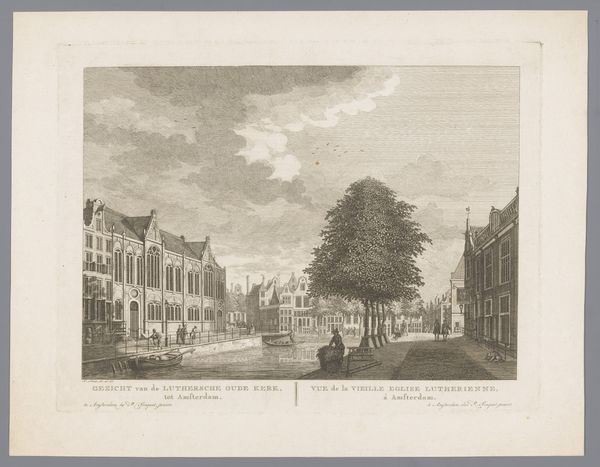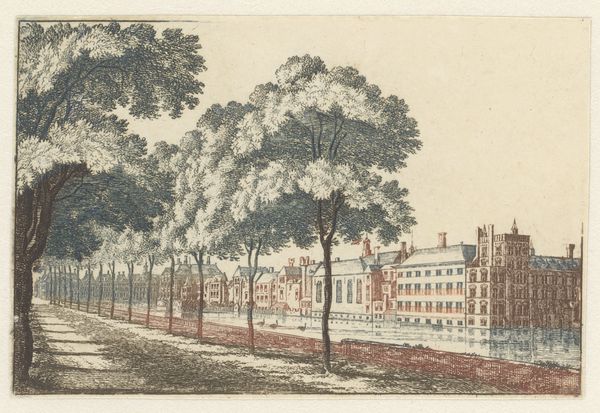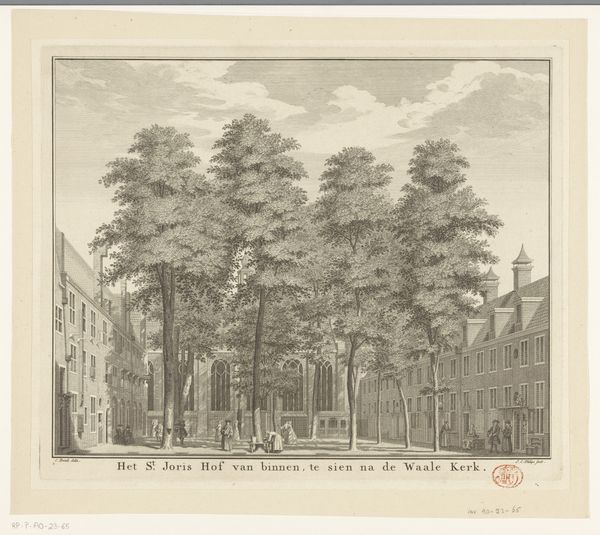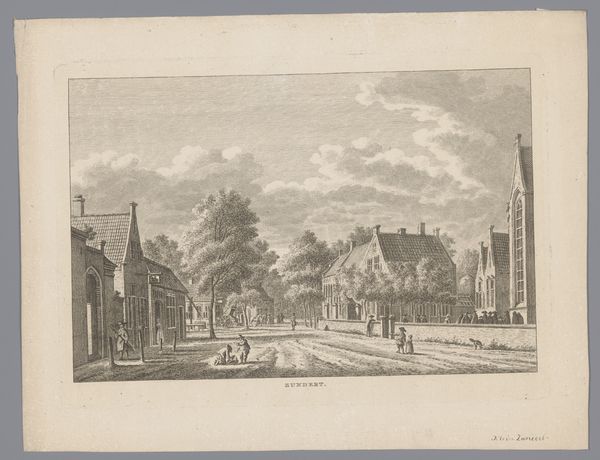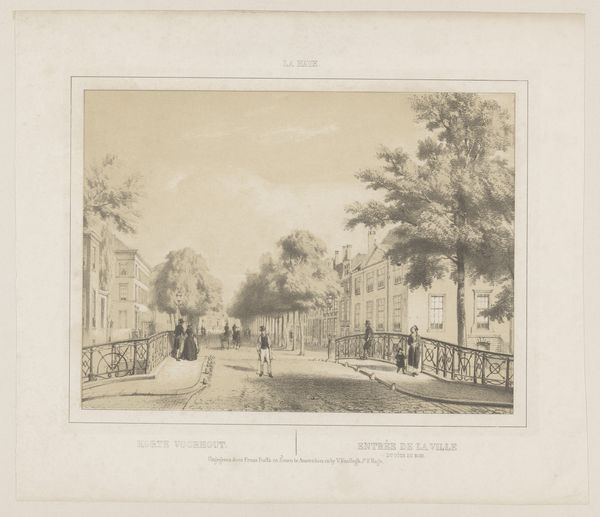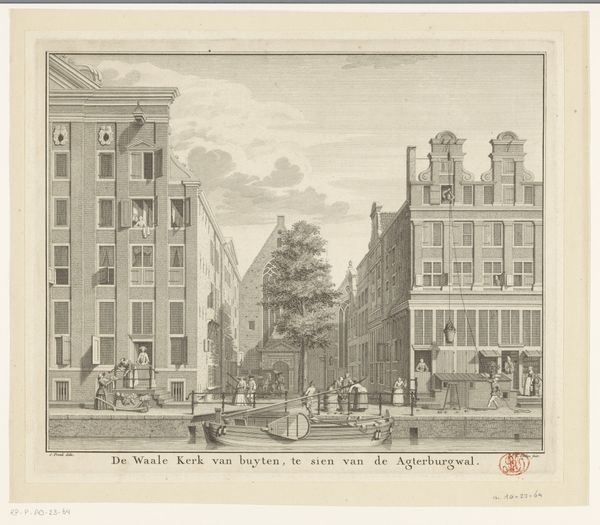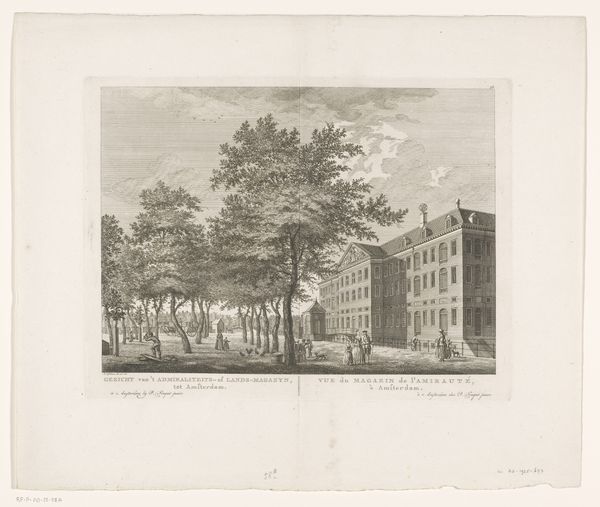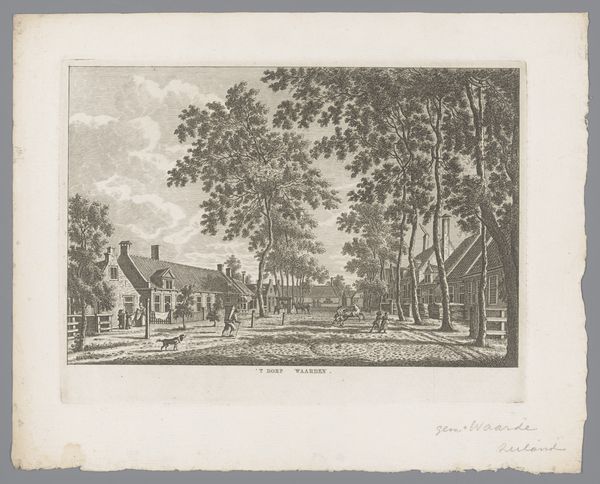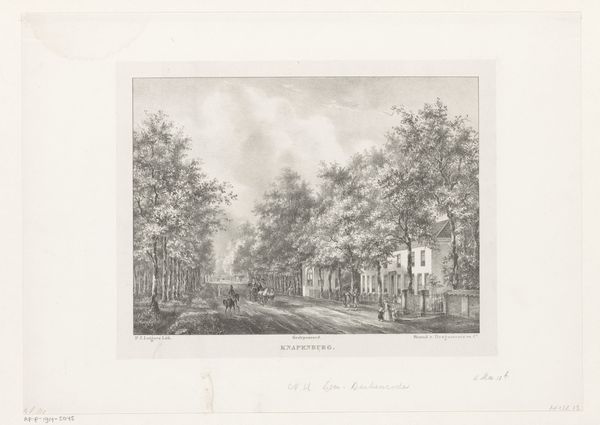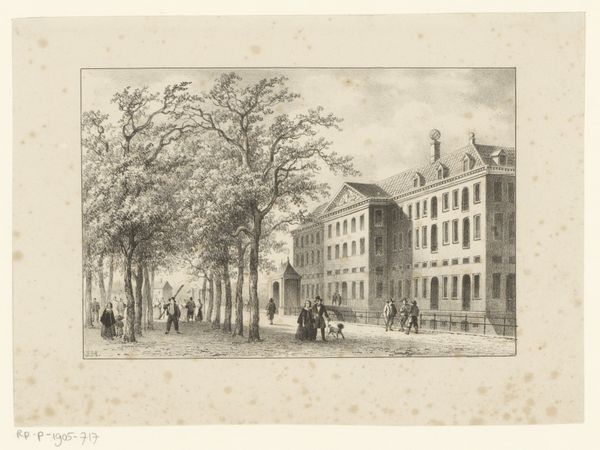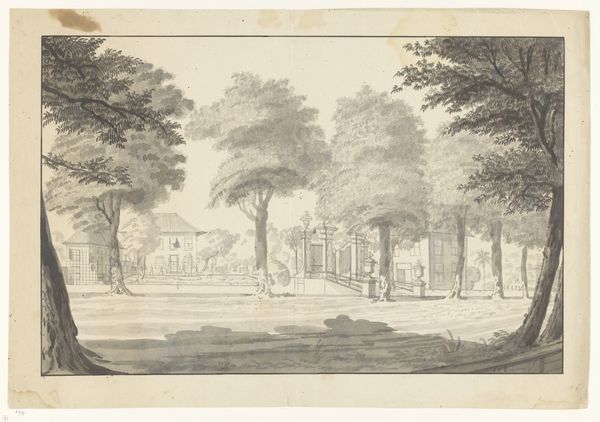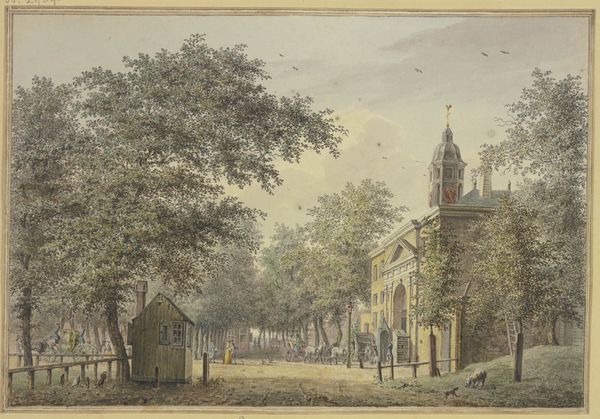
Dimensions: height 310 mm, width 470 mm
Copyright: Rijks Museum: Open Domain
Curator: This detailed cityscape, "De buitenplaats Wisseloord te Muiderberg," created sometime between 1827 and 1898, is attributed to Johan George Lodewijk Rieke and currently resides here at the Rijksmuseum. Editor: My first impression is a kind of serene quiet, despite the activity depicted. It feels like a snapshot of a very specific place and time, capturing the stillness amidst the subtle bustling about. Curator: The painting exemplifies elements of both Realism and Romanticism which speaks to the dynamic tension of the period it was produced in. We can really see here, with Rieke’s decision to depict a everyday scene, his commitment to a realist style, which in this context functions as commentary. What social readings might you offer here? Editor: I see the positioning of class signifiers; the wealthy family traveling by horse-drawn carriage compared with the pedestrians perhaps highlights economic disparities of that moment in the Netherlands. I wonder about the identity and representation of the subjects captured; what perspectives might have been marginalized? Curator: Your analysis raises critical points about class and representation that we, as the hosting institution, ought to explore further! The piece showcases plein-air techniques, indicating Rieke worked, at least in part, outdoors, capturing the light and atmosphere firsthand. Editor: Absolutely, but also this work serves as visual documentation. Think about it: architecture, clothing, and transportation offer insights into Dutch society in the 19th century. The artwork embodies a visual narrative about power, leisure, and access. How was access granted? Who was not pictured, and what would be the power behind that? Curator: Rieke’s careful brushstrokes and attention to detail reflect a specific cultural lens and a desire to preserve aspects of the landscape for posterity. I find that perspective is compelling when considering the power of this historical context in contemporary debates of equity. Editor: I agree! This dialogue is pivotal because understanding the roots of exclusion in our artistic inheritance allows us to deconstruct inequalities in today’s landscape. Thank you for your insights.
Comments
No comments
Be the first to comment and join the conversation on the ultimate creative platform.
